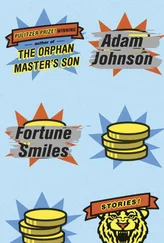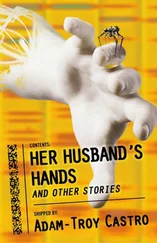It soon emerged that the peculiar equanimity of the elder Almqvist in the face of his son’s disappearance stemmed from his absolute conviction that Gunnar had flown into the core of the cyclone, sampled air that was very (not moderately) cold, and resolved to vanish, airplane and all, much as Fehrmann fils had almost a century earlier, albeit for different reasons, rather than return to his father with his wounded pride and his refuted cyclonic beliefs. When a reporter for the Svenska Dagbladet suggested he at least consider the possibility that both airplane and son really had been lost in the storm, which was in fact of historic intensity, the elder Almqvist merely laughed. “He sampled some very cold air and vanished, that’s all!” he said.
The next day, bits of the young Almqvist’s plane were found floating in the North Sea. These bits — none of which, after all, were wings, propellers, or other components of special aerodynamical consequence — did not seem to trouble his father greatly. “Just come home,” he said, addressing his son in an interview with Dagens Nyheter . “Bring the air temperature measurements.” The next night the plane itself was found incinerated in a field near the town of Hanstholm in northern Denmark. The elder Almqvist told reporters that his proud son must have ejected himself upon noting the coldness of the core air and was now living in Denmark or perhaps by this point Germany, along with his evidence of a very (not moderately) cold cyclone core. But the Swedish newspapers felt now that they would be exploiting an obviously distraught and delusional old man to print these thoughts, or his pleading with his son to “come home, with or without the measurements, though preferably with,” so the journalists wrapped up their articles and left Uppsala.
That, plus political events, pushed the cyclone tragedy off the front page. But Almqvist, who suffered a stroke in ’42 and was bedridden thereafter, asked his extensive network of students to keep an eye out for a tall Swedish meteorologist with a fake name who held down-the-line Uppsala positions on the genesis and decay of extratropical cyclones yet was trying to hold onto a Gothenburg-like model on their intensification, in the face of his own empirical air temperature data. For a long time he heard nothing, but in 1947, shortly before his death, he received an anonymous letter, which may have been a prank, informing him of the appointment of a new M.I.T. professor who seemed to match that exact description.
52: THE KONIGSBERG BUILDING
…………………….
The billionaire banker Konigsberg made major donations to three top business schools — Harvard, Stanford, and Wharton — so that his son, who was only seven at the time, would have his “pick of the litter.” By the time the son applied to business schools fifteen years later, there were Konigsberg Buildings and Konigsberg Gardens on all three campuses. He decided to go to the school with the tallest Konigsberg Building, which was Wharton, and after the first day of class he flung himself off the top of it. He landed, however, on the soft mulch of the Konigsberg Garden, thus surviving the fall and losing only the use of his legs. Since then, thanks to another substantial donation from Konigsberg’s father, Wharton has worked hard to improve the accessibility of its facilities for people with disabilities. Today, Wharton boasts the most accessible business school campus in the world.
…………………….
Details have emerged regarding the recent case of patricide in our town. It seems that the perpetrator had been living rent-free in his father’s attic for ten years. According to court transcripts, the son was attempting during that decade to write a single short story, which was itself about a father and son. For five years the father let the son write, but in the sixth year he began pestering him to see some pages. One member of the jury told the press that the father simply wanted some evidence his son “actually had talent.” Finally, in year ten, the father issued an ultimatum: if the son wouldn’t show him his short story, he would evict him from the attic.
The son hatched a plan to humiliate his father. He knew very well that his father had already made his judgment — that his son had no talent — and would therefore deem anything he showed him a failure. He also knew that his father knew nothing about literature. So the son typed up a canonical short story — Kafka’s “The Judgment”—and presented it under his own name. When his father inevitably dismissed it, according to court transcripts, the son would reveal that he had “just dismissed Kafka” and was thus no authority on literary matters.
That evening, after reading, his father came up to the attic, which he hadn’t done in years. The son was shocked to see tears in his father’s eyes. “You have a great talent,” his father supposedly whispered, pulling his son into a rare embrace. “I’m sorry to have doubted you.”
According to court transcripts, the son was so bewildered by his father’s reaction that he simply said, “You have just dismissed Kafka,” and struck him on the head with a large wrench. The father died hours later in a local hospital.
Probably as a result of the trial publicity, a national magazine actually agreed to publish the murderer’s short story next week. I’m eager to see it. It is reportedly hugely derivative, but not of Kafka.
…………………….
A leading American photographer of the latter half of the twentieth century, whose artistic career had been financed by his father’s once-famous but now-shuttered Fifth Avenue department store, Kern’s, achieved his greatest success with a series of frank, ruthless photographs chronicling his father’s senescence, including that legendarily wrenching shot of the frugal old man scrubbing, without the slightest show of emotion, his soiled undergarments in his bathroom sink. In a brief artist’s statement the photographer said simply that the work was an attempt to “understand my father and my relation to him.”
Thirty years later, the photographer, now roughly the age his father had been in those photographs, declared that he intended to buy back from galleries, collectors, and museums each and every one of them. He spent the rest of the still-considerable Kern’s fortune in doing so. Then he piled the photographs in a barn on his Berkshires farm and set the barn on fire.
The media descended. Every newspaper in the world tried to interview him. He turned down all of them but his local weekly, the Lenox Ledger. Here the photographer explained his realization that under the guise of trying to “understand” his father, he had merely exploited him. Throughout his career, he told the interviewer, whenever he said that he wanted to understand something ( through his art), he really meant that he wanted to exploit it ( for his art). There was nothing to understand about his father, there was only something about him to exploit. There was certainly nothing to understand about death, the other ostensible subject matter of the photographs, only something to artistically exploit. And so forth. Everyone, he said, but in particular artists, humanists, journalists, social scientists, and natural scientists, ought to banish the word “understand” from their vocabularies and replace it in every instance with the word “exploit.”
The photographer died of a brain tumor the following week.
The world consists of nothing but cheap ironies: really, only the cheapest. So no sooner had the eminent photographer excoriated the concept of “understanding” and died of his tumor than the world — especially the art world, the media world, and the academic world — erupted in attempts to understand him and his motives for destroying his greatest works of art. (No one, needless to say, took him at his word.) A couple of neuroscientists emerged to explain, more or less, that the photographer’s tumor had impinged on the portion of the brain normally responsible for preventing people from burning down their own art-filled barns. A woman with, inexplicably, a TV show conjured up out of almost nothing several decades of child abuse, both of the photographer by his father and by the photographer of his own son. But the most convincing explanation — convincing, I admit, even to me, despite my sympathy for the photographer’s rant — came from one jaundiced critic writing online at the New Yorker . Drawing attention to the man’s declining reputation in recent decades, including the almost total neglect of his career retrospective the previous year at MoMA, the critic suggested that the destruction of his greatest photos was actually the photographer’s final exploitation of his father — one last, desperate bid for immortality, which he’d come to realize would not issue from the photos themselves. By burning the photographs of his father, he was trying to ensure his permanent notoriety. The critic proposed seeing the photographer’s career as three successive exploitations of his father and his father’s department store: first as funding, then as subject matter, then, finally, as “combustible material for his eternal flame,” which, the critic predicted rather coldly, would actually “burn out within ten or fifteen years.”
Читать дальше












